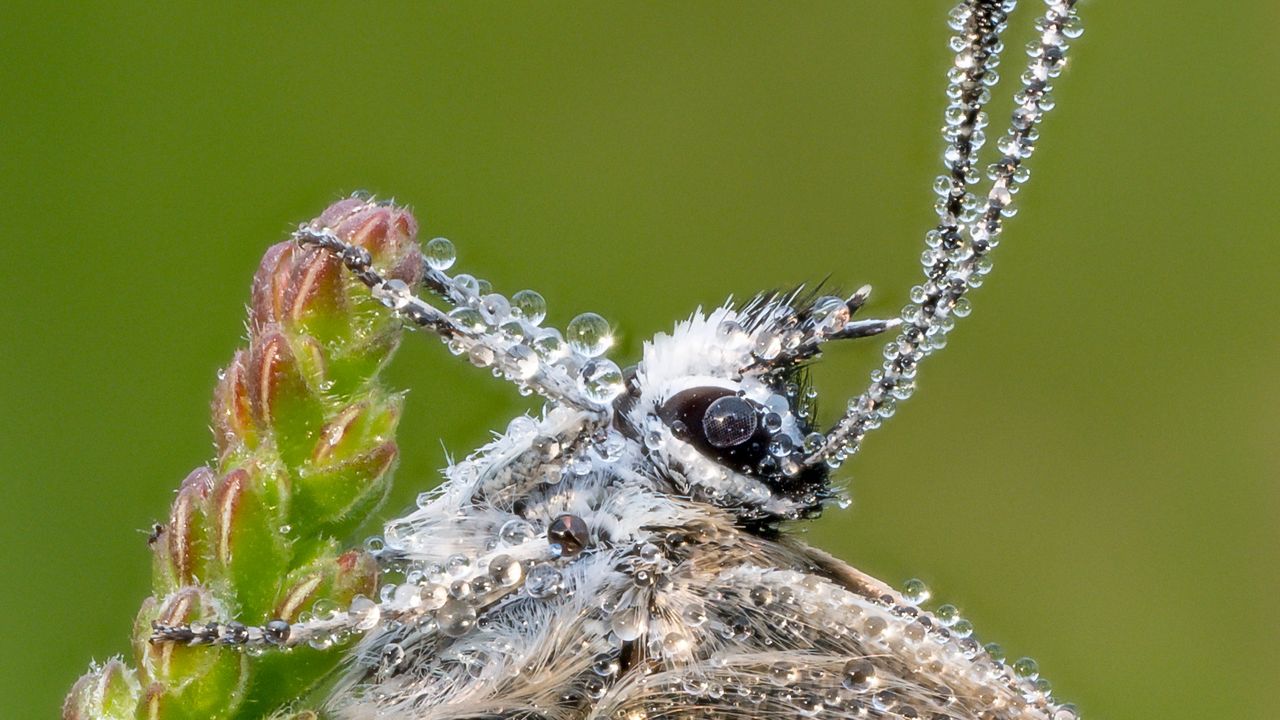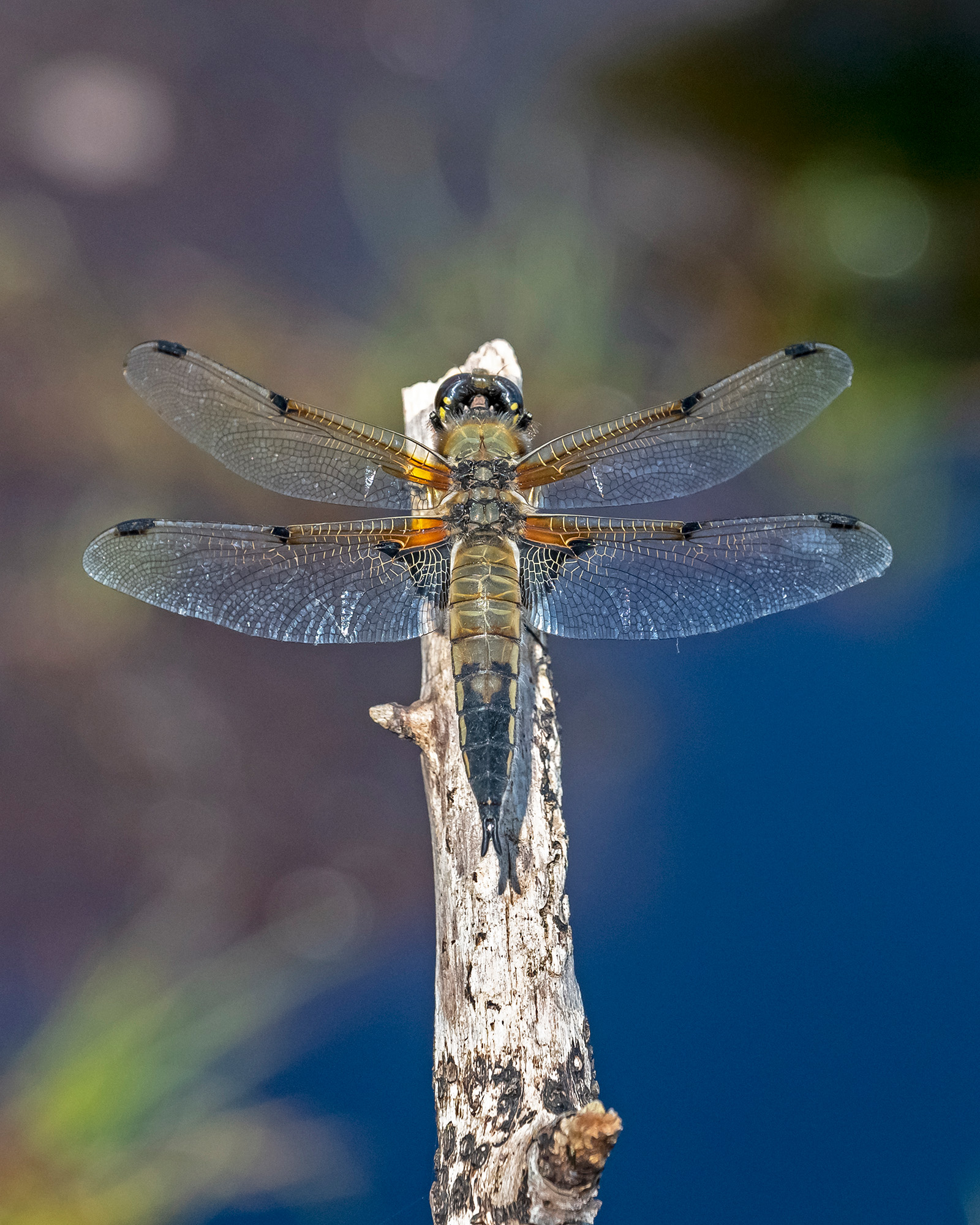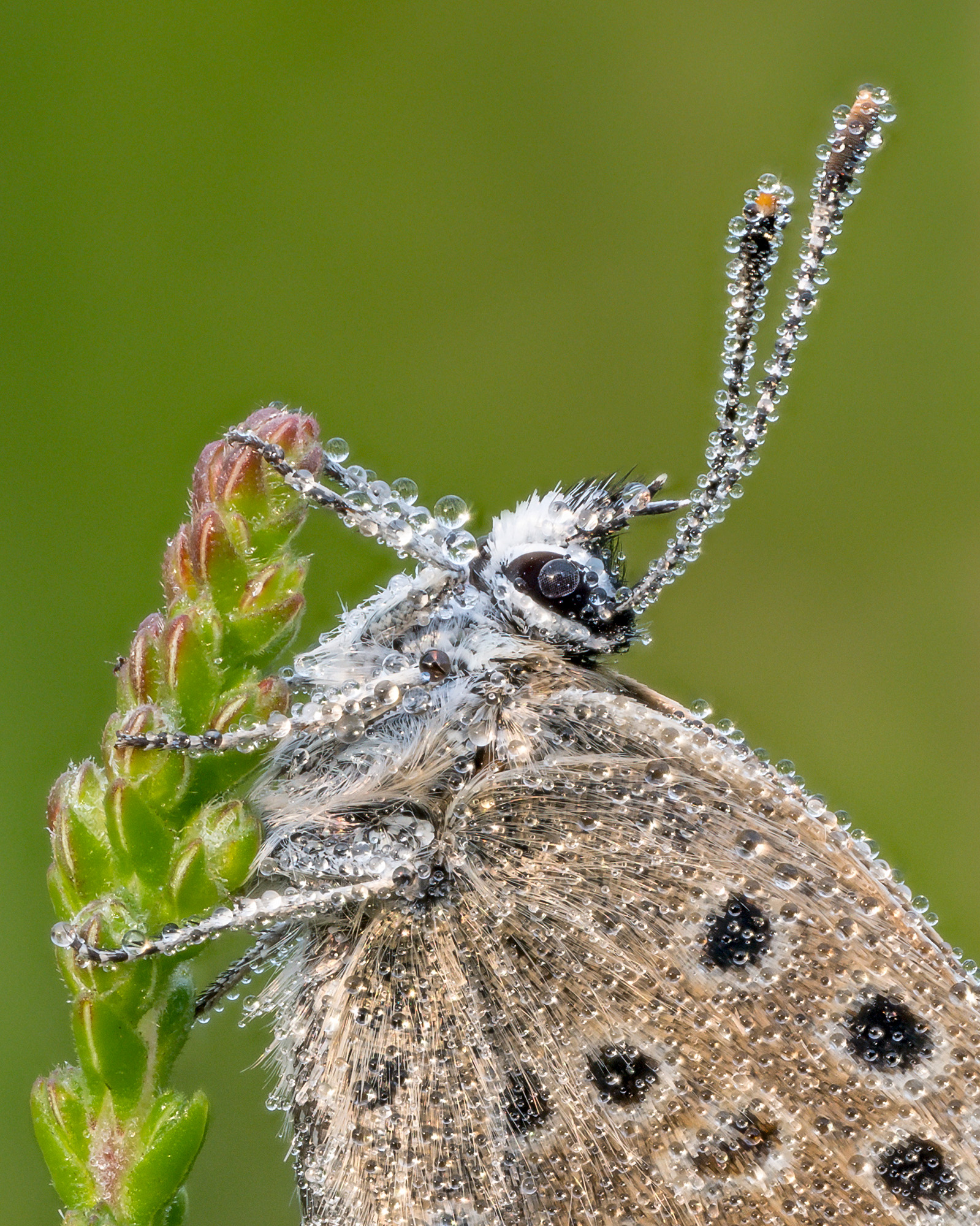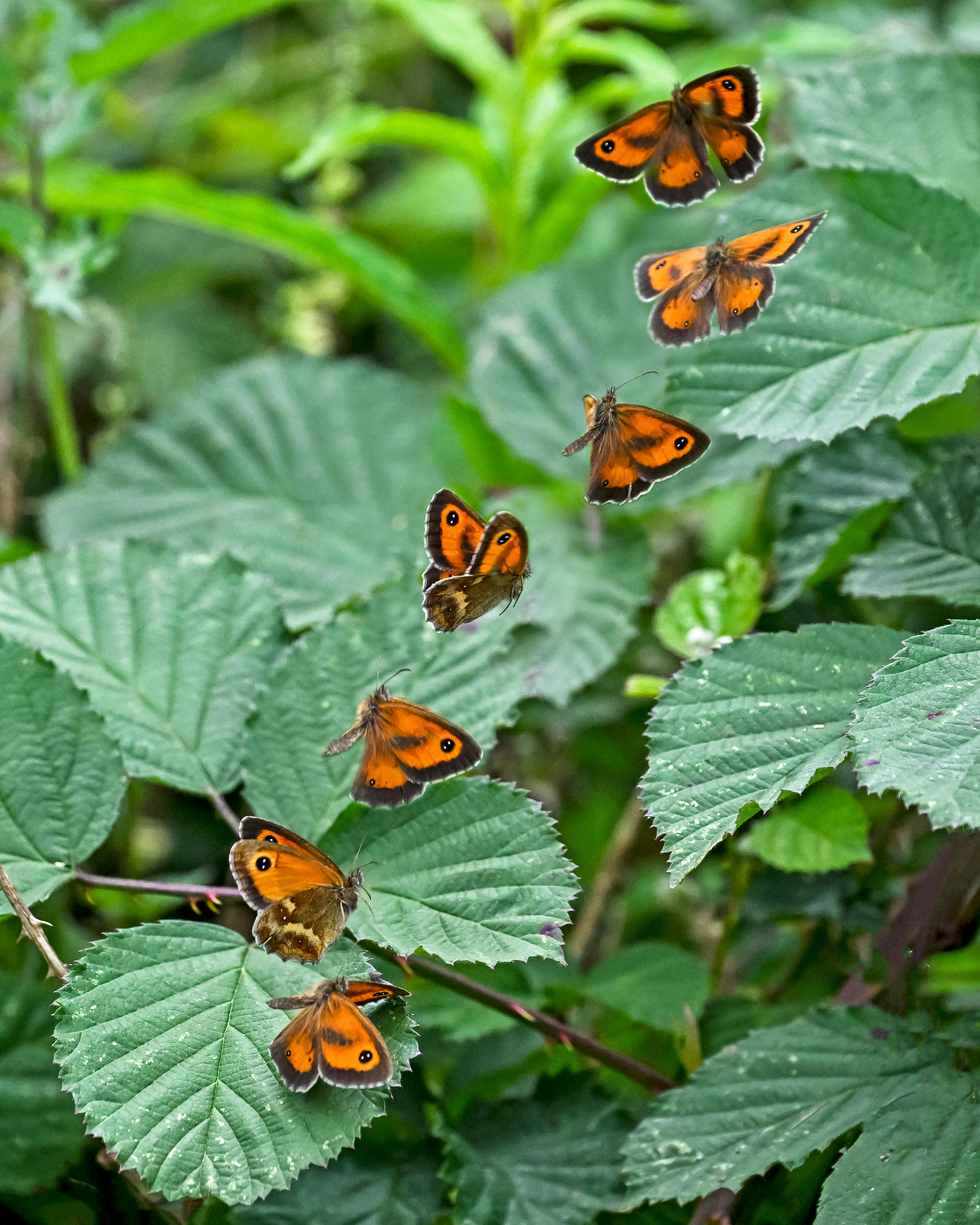
I try to capture the spirit of nature, so I can share its beauty with others. All my images are taken in natural habitats. I never move or relocate subjects for better backgrounds and tread lightly to respect the habitat I’m privileged to experience.
The images are a gift to me by nature herself. I believe photographers have an important part to play in conservation, sharing the wonders of nature to a wider audience and thereby increasing awareness of the beauty we could potentially lose.
I was introduced to photography by my late father in the early Seventies; we used to develop and print our own photos in a home darkroom. We then got into macro photography. Our field kit was a macro lens on bellows with a pistol grip and cable release.
Fast-forward and I’ve been using Nikon cameras for many years. My first DSLR was the D70, the last my D850, as I’ve [at the time of writing] just received a brand-new Nikon Z8.
My interest in butterflies has become much more serious in recent years, and I’m now studying their behavior at my local nature reserve. The Z8’s high frame-rate has given me the chance to photograph courtship displays and subsequently decode behaviour patterns that the D850 just couldn’t, consistently. Having viewed the first few images from my Z8, I realized just how far optics have progressed.
The Z8 has enabled me to get much sharper images. Combining in-body VR and lens VR means I can use lower ISO settings. The high frame rate of up to 120fps means I can get in-focus sequences of insects in flight, much easier. Focus stacking is also much quicker than the D850, which means less chance of the insect moving or a breeze interfering with the sharpness of the shot.

It's a wing-win situation
I wanted to capture the essence of a summer’s evening – a butterfly in a meadow bathed in golden sunshine. Butterflies roost in the early evening, often where they’ll catch the dawn sun. As a volunteer at my local reserve, I knew a secluded meadow with the right grass.
The challenge was to find a solitary butterfly, catching the sun with its wings not fully closed and no wind. The small heath butterfly [1] closes its wings as soon as it settles, hiding the ‘eye’ and orange colour of the forewing, so I had to fire the shutter before it settled.
I got myself set up and waited. It had seen me and promptly moved…
Dragonflies are skittish subjects [2]. I’d watched this one for a while and realized it favored sitting on the same stick. I got myself set up and waited. It had seen me and promptly moved to another stick… I crawled towards it, silhouette below the skyline. Bingo! It landed and I got the shot.
I’ve taken images like this [3] before on my D850 and wanted to see how the Z8 and Z MC 105mm f/2.8 VR S would compare. I arrived just after dawn, mist hanging in the meadow and the sun peeping above the horizon. Research meant I had a pretty good idea where the silver-studded blues roosted.
I eventually found a pristine female covered in dew and not obscured by heather stems. Once the sun crept above the trees behind me, it illuminated the butterfly and added golden sparkles to each of the dewdrops. Perfect!



The six-spot burnet [4] is a day-flying moth. It can be seen on a summer’s day, painting the sky with black lines, edged in red. I reccied a few locations and waited for a calm evening with subdued lighting.
I found four roosting on a thistle bloom, but as soon as I got set up they fell into the undergrowth; an effective defensive mechanism. I waited and, sure enough, they crawled back up their stems. I used Focus Peaking to ensure the nearest point was in focus and then used Focus Shift.
The butterfly in this image [5] is smallish in size and very ‘flighty’. I wanted to capture it in its natural environment, where it often skips among the brambles. It’s also known as the hedge brown due to its propensity to frequent hedgerows.
I used back-button focus with the Z8’s Pre-Release Capture so it recorded images when the shutter button was only half depressed, compensating for my slow reactions as the butterfly took off.
Nigel's top tips
- Get to know your subject, where they roost, which flowers they visit and how they fly. The latter is particularly important when capturing insects in flight. Predicting the flight path can make or break an image.
- Use a fast shutter speed when photographing insects in flight, ideally 1/8000 sec. This will freeze your subject’s beating wing movements.
- Insects are more dormant late in the evening or early in the morning. The latter is preferred, as dew will often settle on potential subjects, especially if there has been rain overnight.
This article was originally published in N-Photo: The Nikon Magazine (issue 154)
You might also like...
If you're interested in macro photography, then you'll need a sturdy tripod. If you're interested in nature photography, then here are the best cameras for wildlife and the best cameras for landscapes.







